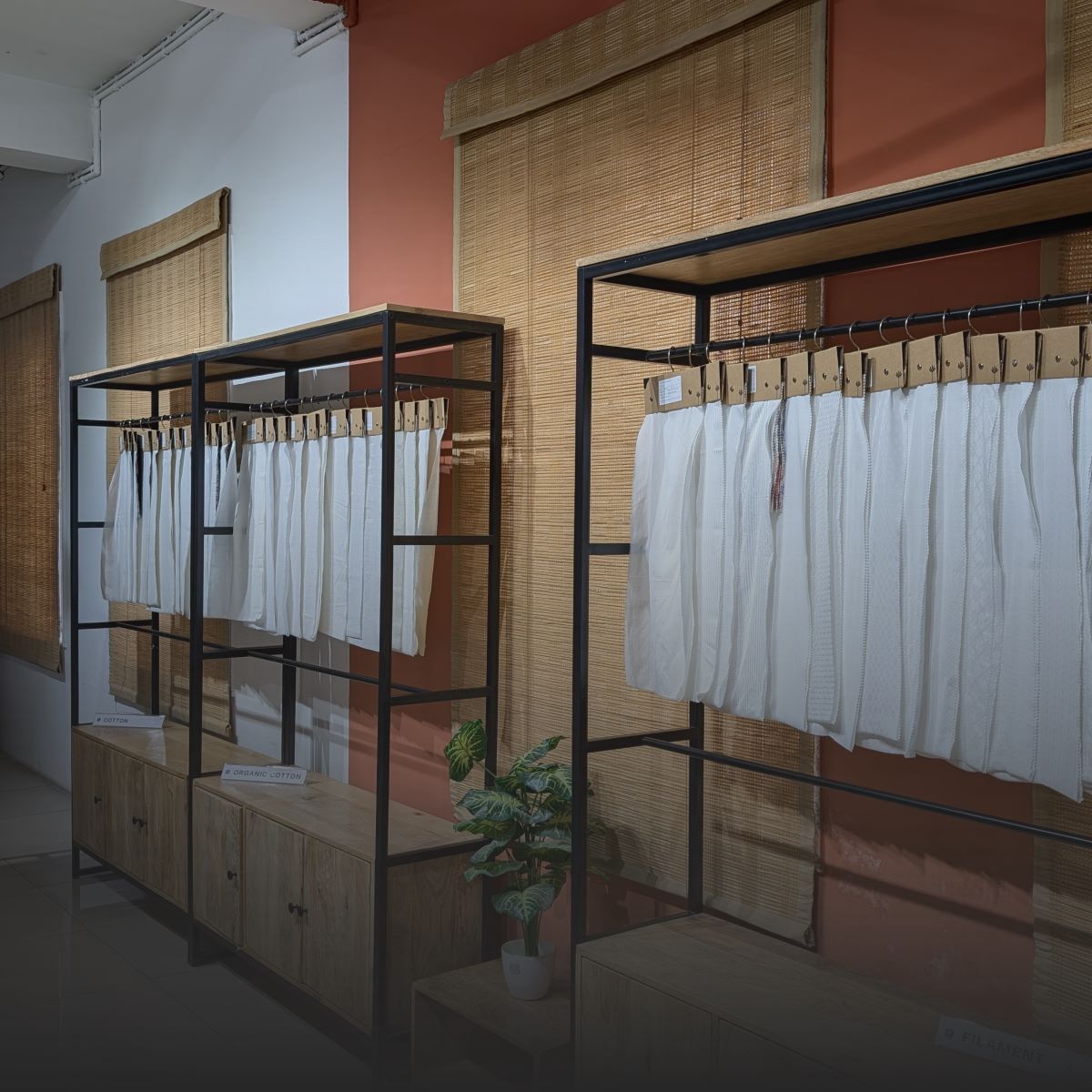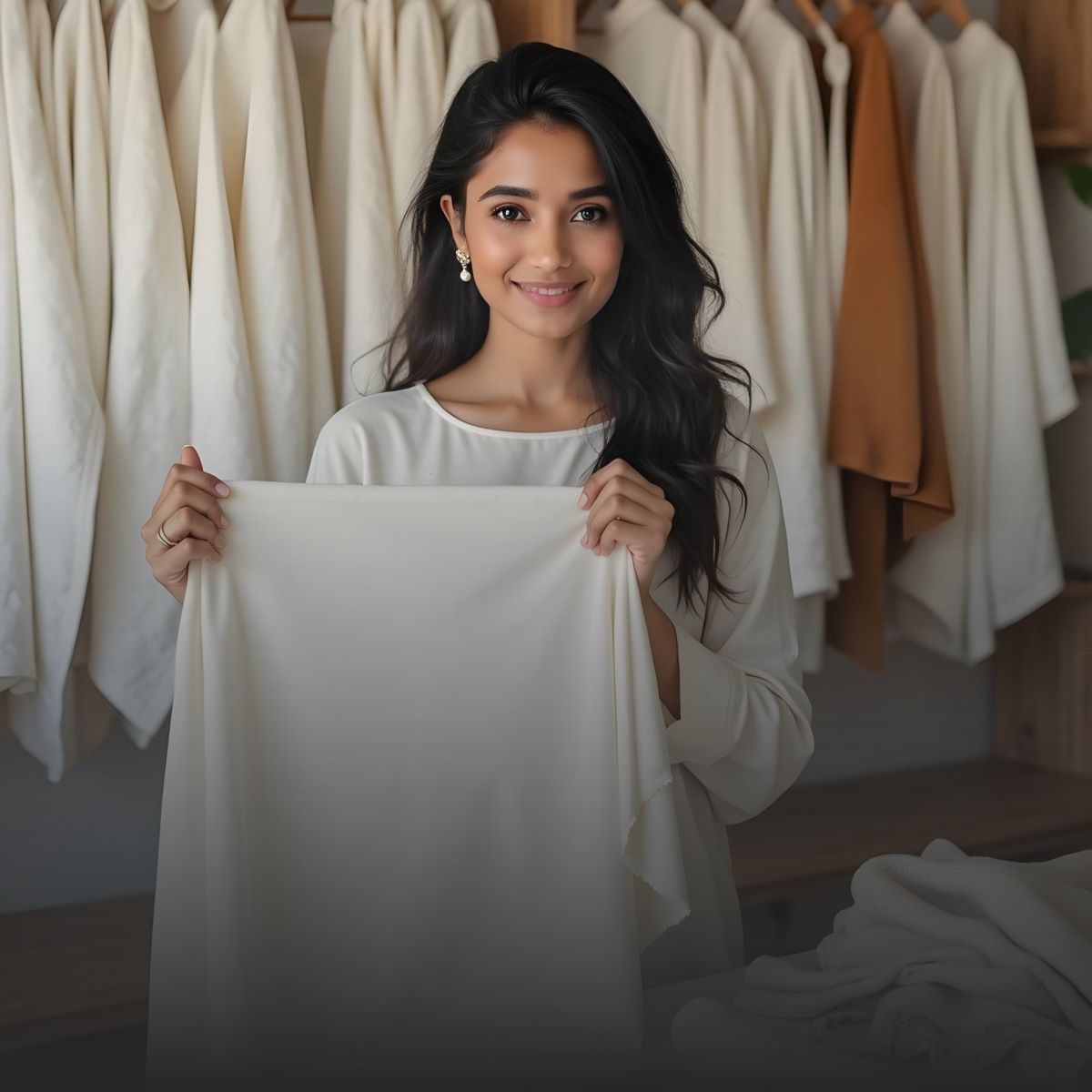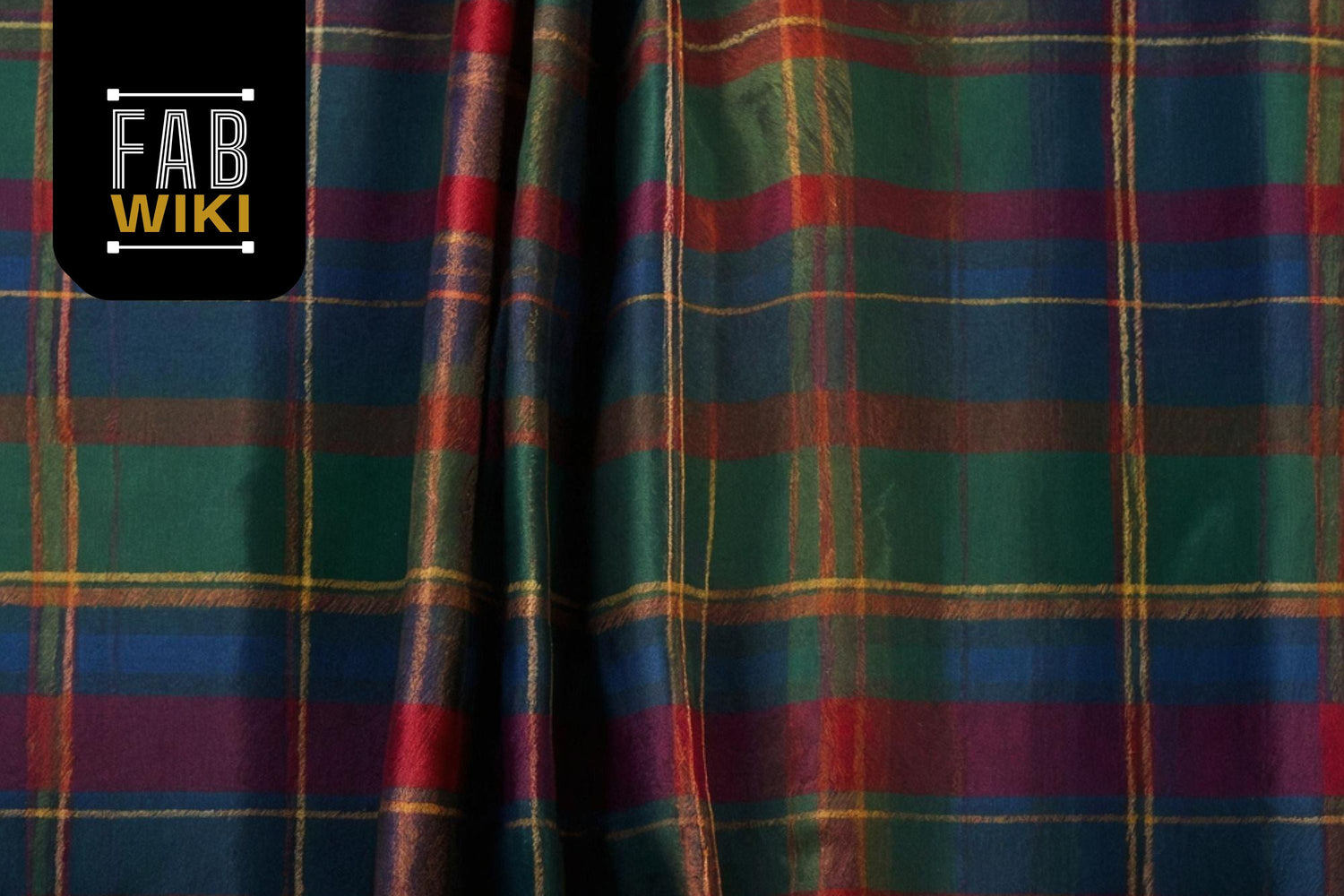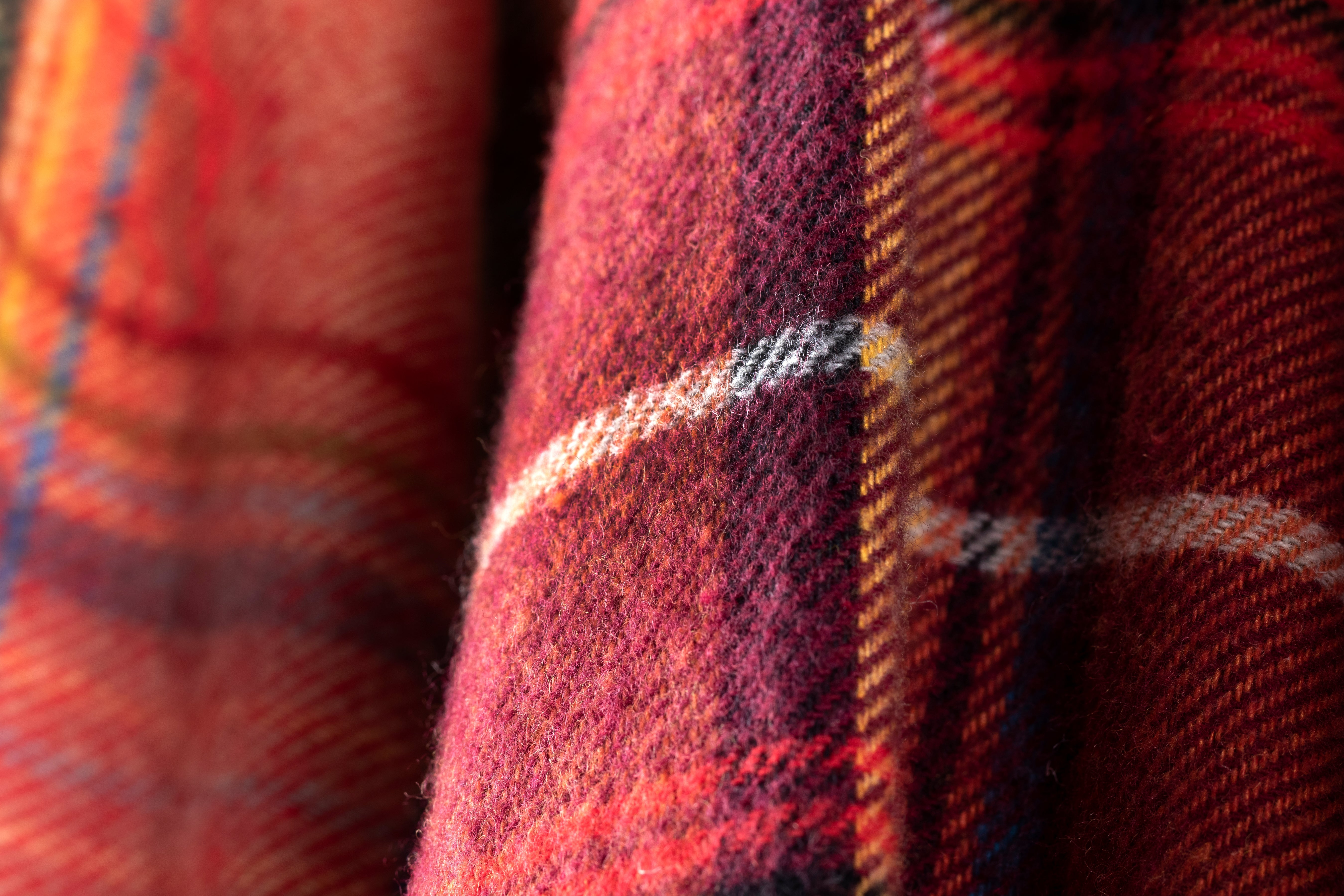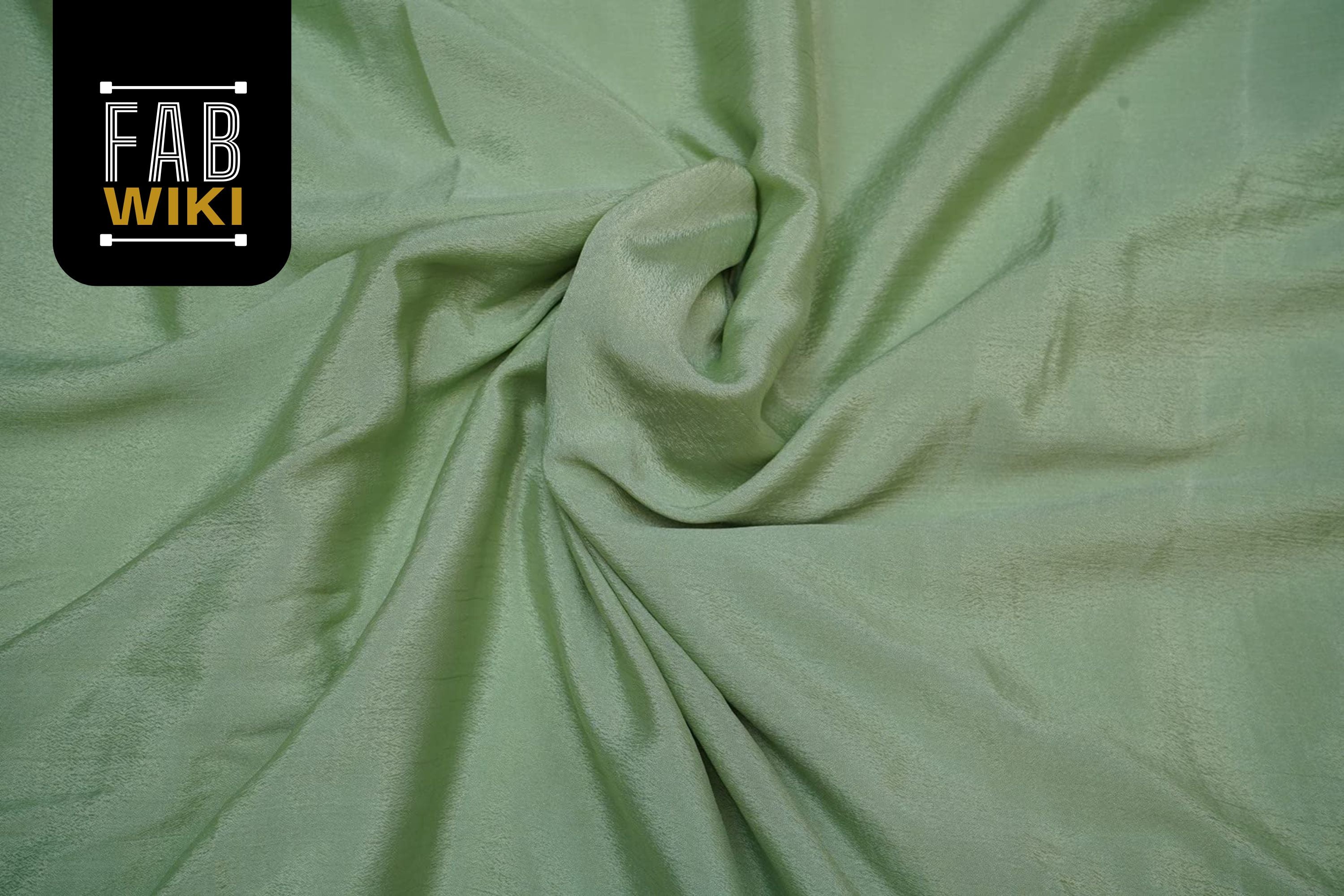From high-end Irish linen to traditional Irish tweed, Irish fabric has a long history of craftsmanship, custom, and provenance. It offers brands and textile buyers a unique way to tell a story, perform well, and be true to themselves. This guide talks about what makes Irish fabrics unique, including where the fibers come from, how they are woven, technical details, buying tips, and market trends.
What Does "Irish Fabric" Mean?
"Irish fabric" is a broad term for a number of heritage and approved textiles made in Ireland (Republic of Ireland and Northern Ireland). It mainly refers to:
- Irish linen: Premium linen yarns/weaves produced or finished in Ireland.
- Irish wool/tweed fabrics: Woollen cloths such as Donegal tweed, Irish lowland wool weaves and patterns rooted in Irish weaving tradition.
When brands and sourcing workers talk about "Irish fabrics," they often pay more for products that come from Ireland.
Key Characteristics of Irish Linen & Irish Tweed Fabric

Linen and tweed are different in many ways. Here is an overview of those differences, followed by some essential bullet points.
Irish Linen:
- Made from flax fibre; woven or finished in Ireland.
- Crisp hand, natural luster, breathable, strong and ideal for warm-weather/off-season luxury garments.
Irish Tweed / Wool Fabric:
- Derived from Irish lowland wool, traditional weaves (herringbone, tweed speckled "neps") such as Donegal tweed.
- Robust, textured, heritage aesthetic, firm structure, visual depth, ideal for autumn/winter tailoring.
Core Properties (combined):
- Natural fibre base: flax/linen for linen; wool for tweed.
- Strong provenance: weaving, finishing or production in Ireland adds value.
- Distinct treatment: finishing, patterning (speckle, fleck in tweed), natural luster (linen).
- Performance: durability, breathability (linen), insulation and texture (wool/ tweed).
- Premium cost tier: heritage manufacturing, smaller scale, branding value.
Benefits for Apparel Brands & Textile Buyers
Getting "Irish fabric" from a supplier has several strategic benefits for brands:
Brand & sourcing benefits:
- Heritage and telling stories: The words "Irish linen" and "Irish tweed" are used to describe high-end names.
- Distinct differences in style: The crisp luxury of linen; the texture and country charm of tweed.
- Positioning at the top: You can use it in traditional tailoring, luxury resortwear, capsule collections, or limited-edition lines.
- Advantages for performance: The strength and freshness of linen; the structure and warmth of tweed.
- Wide appeal: Irish fabrics are known around the world for their quality and authenticity.
Direct benefits:
- Elevated material perception and brand prestige.
- Versatility across categories: shirts, dresses (linen), blazers, coats, accessories (tweed).
- Extended product lifecycle: durable fabrics that age well (especially tweed).
- Clear supply-chain story and premium narrative.
- Suitable for export-ready production with heritage certification.
Comparison Table – Irish Fabric vs Alternatives
Here is a list of standard fabrics and Irish fabrics that can help brands decide when to use Irish fabrics.
|
Fabric |
Key Traits |
Best Use |
|
Irish linen |
Premium linen, crisp, breathable, made/finished in Ireland |
Lightweight luxury shirts, dresses |
|
Irish tweed / wool fabric |
Heritage wool, textured, flecked, strong, structured |
Tailored jackets, outerwear, premium menswear |
|
Standard linen or wool |
Generic fibre origin, less provenance, lower cost |
Volume casualwear, commodity uses |
Types / Constructions Available
There are different kinds of Irish fabrics based on the fiber, weave, weight, and finish. Here are some crucial variations:
|
Type |
Composition / Weave |
Texture & Appearance |
Common Uses |
|
Irish linen plain / poplin |
100 % flax linen, plain weave |
Crisp hand, natural luster |
Luxury shirts, dresses, resortwear |
|
Irish linen dobby / jacquard |
100 % flax linen, dobby or jacquard weave |
Patterned texture, refined luxury |
Premium shirts, accessories |
|
Irish tweed heather / speckle |
100 % or high % Irish wool, twill/herringbone |
Speckled neps, textured surface |
Blazers, coats, premium menswear |
|
Irish wool plain weave |
Irish lowland wool, plain/twill |
Smooth wool hand with heritage appeal |
Suits, overcoats |
|
Heavy wool tweed upholstery |
Wool blends (Irish wool + others), heavy weave |
Dense texture, robust hand |
Upholstery, luxury home textiles |
GSM / Weight Guidance & Technical Specification
Weight and structure are essential when looking for Irish fabrics. Here are some tips:
The fabric's suitability for clothing or home textiles depends on its weight (in grams per square metre or ounces per square yard), yarn makeup, weave density, and finish. Specifying correctly guarantees performance and fits with how the brand is used.
Weight guidance table:
|
Weight / GSM (Approx.) |
Indicative Description |
Ideal Applications |
|
120–180 g/m² (≈ 3.5–5 oz/yd²) |
Lightweight linen |
Dresses, shirts, lightweight trousers |
|
200–300 g/m² |
Mid-weight linen / light wool |
Resortwear, mid-season jackets |
|
300–400 g/m² |
Standard wool / tweed weight |
Blazers, coats, tailored menswear |
|
400 g/m²+ |
Heavy tweed or wool upholstery weight |
Outerwear, luxury upholstery |
Additional specs to define:
- Yarn count / fibre origin (Irish wool, Irish-woven linen yarns)
- Weave/twill pattern (herringbone, twill, plain)
- Fleck/nep density for tweed
- Finish (pre-washed linen, mercerised, sand-washed, etc.)
- Width of fabric (typical 130-150 cm for apparel; wider for upholstery)
- Certifications (e.g., Irish Linen Guild trademark for genuine Irish linen)
How Irish Linen & Tweed Fabrics are Made – Technical Process

Knowing how something is made helps buyers judge its quality, where it came from, and how well it works.
Irish linen is made from flax fibre that is spun into yarn, sewn, and finished in Ireland to make high-quality linen fabrics. The wool used to make Irish tweed is dyed, spun, and made in heritage mills using old-fashioned methods. Neps or speckled yarns are often used to give the fabric character.
Production steps:
- For Irish linen: flax cultivation (historically in Ireland), fibre preparation (retting, scutching), then yarn spinning, weaving in Ireland, finishing in Ireland.
- For Irish tweed: Irish wool– often lowland or regional breeds, yarn dyeing/blending, creating neps/flecks, weaving by twill/herringbone in Irish mills.
- Quality & finishing: washing, brushing (for tweed), pressing, checking flecks, shade consistency, roll inspection.
- Certification/trademark: For Irish linen, finishing in Ireland under the Irish Linen Guild trademark validates authenticity.
Applications by Category
Because of their history and function, Irish fabrics are used for many different types of goods.
|
Category |
Recommended Irish Fabric Variant |
Key Benefits |
|
Menswear / Tailoring |
Irish tweed wool (300–400 g/m²) |
Structure, texture, heritage premium value |
|
Womenswear – Resort / Summer |
Irish linen lightweight (120–180 g/m²) |
Breathability, luxury hand, warm-weather use |
|
Accessories |
Irish tweed for caps/scarves; or linen for scarves |
Texture, premium feel, strong brand story |
|
Home Textiles |
Heavy Irish wool tweed for upholstery; linen for throws |
Durability, heritage, aesthetic luxury |
|
Outerwear |
Heavy tweed (400 g/m²+) or wool blended Irish cloth |
Warmth, visual depth, premium market positioning |
Sourcing & Specification Checklist
Brands and textile buyers should follow a structured workflow and double-check key factors when buying large amounts of "Irish fabric."
When looking for Irish fabrics, you need to pay attention to where they came from, quality certification, weight, weave, performance tests, and production logistics. When buying Irish linen, brands should make sure they see samples, test reports, mill credentials, and a trademark that says the linen is real.
Checklist:
- Verify fabric origin: woven/finished in Ireland (especially for Irish linen).
- Fibre composition: 100% flax linen, or 100%/high % Irish wool for tweed.
- Yarn and weave details: yarn count, twill type, herringbone for tweed, plain/dobby for linen.
- Weight/GSM specification.
- Finish/hand feel: pre-washed linen, brushed wool, flecked yarns.
- Certification/trademark: Irish Linen Guild mark.
- Swatch request: test hand, texture, drape, fleck clarity.
- Lab tests: colourfastness, shrinkage, pilling (for tweed), tensile strength.
- MOQ & lead time: Irish heritage production may have longer lead times.
- Roll width/yield, repeat orders and shade stability.
Care & Maintenance
Due to natural fibres and heritage manufacturing, Irish fabrics need proper care to maintain their value and look.
Irish linen and tweed require fibre-specific care because of their flax structure and wool weave with flecks. Washing, storing, and using properly preserves texture, look, and durability.
Care guidelines:
- For Irish linen: Pre-washed linen can be washed in a machine on the gentle mode with cold water. To keep it from creasing too much, don't dry it on high heat.
- For Irish tweed/wool: Dry-clean or use the gentle wool cycle. Stay away from direct heat and folding lines. Hang jackets and coats on wide hangers.
- Storage: Keep in airy bags and keep away from dampness and humidity. For tweed, wear it in different ways to keep it strong.
- Spot-clean gently; Avoid abrasive cleaning.
- Iron/steam linen for crisp finish; Lightly brushing tweed gets rid of dust and helps keep the structure.
Pros & Cons
It's essential to think about the pros and cons of Irish materials before buying them.
Advantages:
- Great value in history, provenance, and brand story.
- Feel and effectiveness of high-end materials (linen is cool, tweed is textured and warm).
- Unique ways to set high-end or niche groups apart.
Potential drawbacks:
- It costs more than regular linen or wool fabrics.
- Because of the way things are woven in Ireland, lead times may be longer.
- Volumes may be limited by the size of the production scale.
- Care and maintenance for old wool fabrics may need more attention.
Trends & Innovations in Irish Fabrics
Irish fabrics keep changing to keep up with new fashion styles, eco-friendly materials, and modern ways of getting them.
Key trend areas:
- Sustainable linen sourcing: Eco-certified flax, low-impact finishing.
- Lightweight Irish wool blends: Mixing local wool with recycled fibres for heritage appeal and modern sustainability.
- Pattern innovation: New colour flecks, contemporary tweed variations for fashion/lifestyle segments.
- Luxury resort wear using Irish linen: Linen's natural properties make it ideal for luxury warm-weather collections.
- Global demand for heritage textiles: Irish linen and tweed are increasingly used in designer collections and premium menswear.
Final Thoughts
"Irish fabric" represents history, expertise, and quality. Designers, brands, and textile purchasers use Irish linen and tweed to manufacture luxury, unique products. They add function, depth to the look, and a story to the brand. But success relies on having the correct specifications, buying from reputable mills, balancing costs and lead times, and making sure that care and finishing practices are in sync.
If you want to make the most of your Irish linen and tweed jackets, whether you're launching a high-end resortwear line or a tailored winter collection, you need to know where the fibres come from, how the jackets are woven, how well they work and how to position your brand.
FAQs — Irish Fabric
Q1. What Qualifies A Fabric As "Irish Linen Fabric"?
The yarns don't have to be spun in Ireland for a fabric to be called "Irish linen." It just needs to be made in Ireland from 100% linen yarns.
Q2. What Is "Irish Tweed Wool Fabric"?
Irish tweed is a wool-based fabric made in Ireland. It is woven in Irish mills using Irish wool or blends and often has flecks (neps) or heritage designs (herringbone, twill).
Q3. What Weight Should I Specify For An Irish Linen Dress Fabric?
Light Irish linen (about 120–180 g/m²) is suitable for shirts and dresses because it drapes well, breathes well, and has a nice feel to it.
Q4. How Do I Care For An Irish Tweed Jacket Made From Heritage Wool Fabric?
Avoid high heat, hang it on a wide hook, brush it every so often, and store it away from dampness and moths. Use the dry-clean or gentle wool cycle.
Q5. Are Irish Fabrics Suitable For Small-Batch Or Capsule Production?
Yes, a lot of Irish heritage mills will do custom runs, but the minimum order quantity (MOQ) and wait time will be longer than for standard fabrics.
We also happen to be a magnet for suggestions, and would love to catch yours….throw us yours on hello@fabriclore.com
